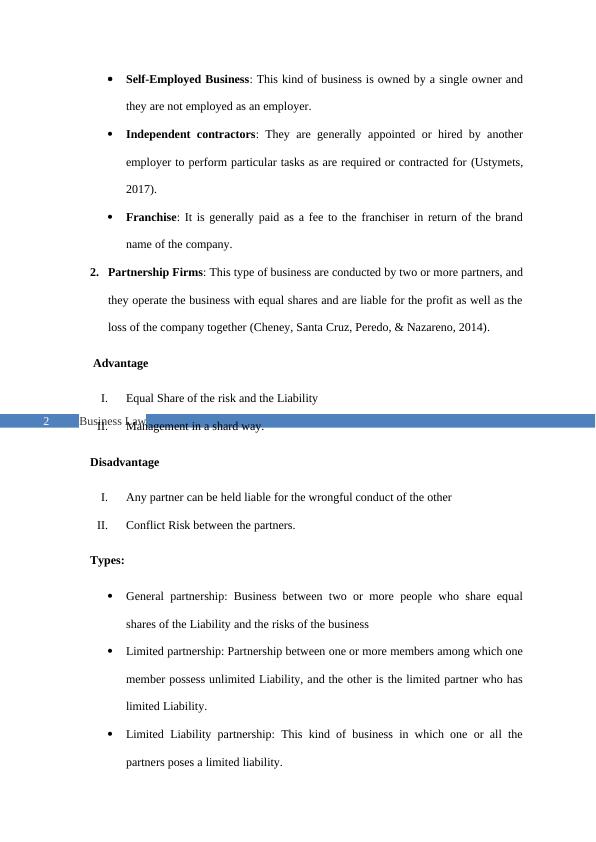Business Law - case study solutions
Identify and explain the relevant business forms available to Mike, Adam, and John, along with advantages and disadvantages for each form, and recommend a suitable business form for their circumstances.
8 Pages1371 Words31 Views
Added on 2022-08-01
Business Law - case study solutions
Identify and explain the relevant business forms available to Mike, Adam, and John, along with advantages and disadvantages for each form, and recommend a suitable business form for their circumstances.
Added on 2022-08-01
ShareRelated Documents
End of preview
Want to access all the pages? Upload your documents or become a member.
Types of Business Organizations and Dispute Resolution Methods
|16
|986
|253
Types of Business Organizations: Formation, Management, and Funding
|15
|777
|110
Understanding Business Organisations - Essay
|9
|2217
|162
Comparison of Sole Proprietorship, Partnerships and Corporations
|5
|804
|192
Conflicts of Interest among Shareholders and Business Managers
|8
|2308
|455
Understanding Business Organisations - Essay
|7
|1920
|229



